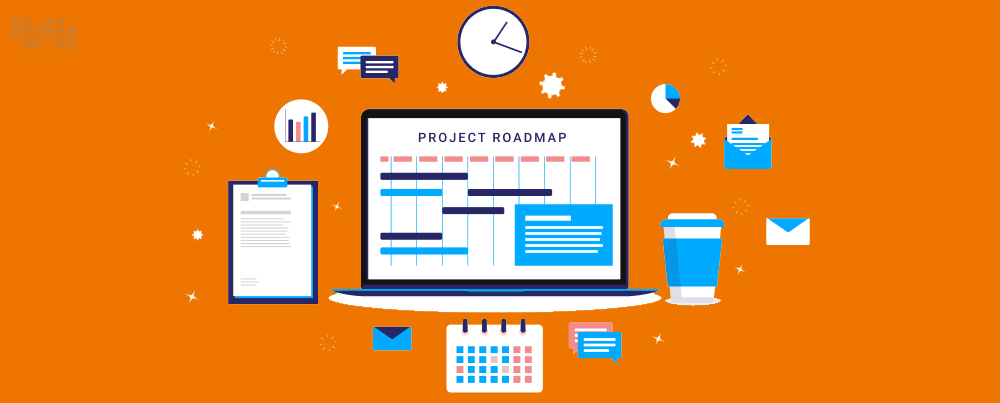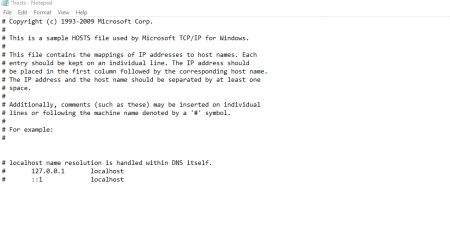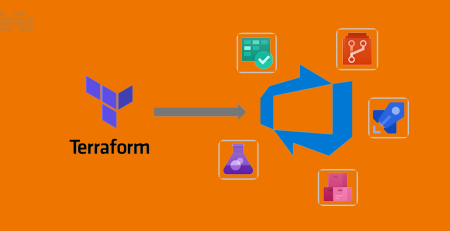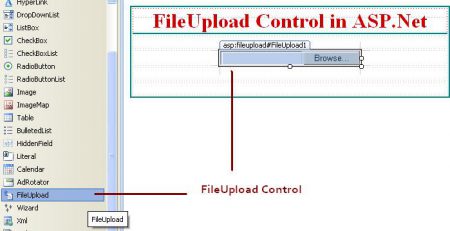Mobile Application Development Roadmap
When creating a mobile app from scratch, you will inevitably face the challenge of transforming your initial concept into a viable implementation strategy. A product manager plays an important role in this process: their mission is to ensure that the work of everyone involved in product development is synchronized and coherent. A mobile app development roadmap or product development roadmap is the first and most important tool for achieving this goal.
Since 2014, Nile Bits has been developing mobile apps for various industries, and we are confident that a high-quality product can only be created with a solid foundation laid out in the roadmap.
What is a product development roadmap?
The product development roadmap is a strategic document that reflects your product’s vision and development plan. It is designed as a dynamic summary, documenting each step of the development process. In layman’s terms, a roadmap is a list of prioritized features or requirements for a product or service that also includes a release timeline.
A roadmap for mobile app development is typically shaped like a horizontal bar chart that depicts progress and timing for a number of initiatives and tasks. The most useful and simple roadmaps should be adaptable to allow for constant revision. As a result, using roadmap tools and templates is the most convenient way to compile them.
- Vision. The description of the whole idea of the end-product. Typically, this part answers the questions about who the app is designed for and why, as well as what the final product should look like.
- Execution plan. The list of practical steps you should take to end up with the vision you’ve outlined.
- Practical goal. An objective that is planned to be reached after completing the execution stage. It’s critical to ensure that this goal can be measured by concrete metrics.
- Initiative. Broad themes that unite features that must be implemented in the end-product.
- Feature. A piece of a product, which is either part of functionality or a third-party application.
- Timeframes. Fixed or provisional timelines for delivering the whole product and its specific features.
- Status markers. Markers the team will use to evaluate the progress of product development.
- Metrics. The list of metrics that you will use to assess goals.
The process of developing a mobile app is fraught with pitfalls and involves multiple iterations, which is why a roadmap for mobile app development, as an essential component of overall project management, plays a critical role in the end result.
Why do you need a software product roadmap?
The roadmap for mobile app development serves several functions:
- To facilitate internal work on a product. In other words, the mobile app development roadmap plays a bridging role between the general idea of an app and aspired business goals by setting out a concrete plan for how to achieve these goals.
- To streamline communication with external stakeholders. This relates to all investors, contractors involved in the development process, as well as end-users.
- To make the strategy and the vision of the product understandable for the roadmap’s audience.
- To enable displaying of changes and advances of the product in line with market requirements.
- To prioritize particular units of development and set timelines for them.
A clearly and accurately compiled product development roadmap will assist you in navigating the entire product development process: what your focus should be in the short-, medium-, and long-term, what app features should be prioritized right now, and how to manage stakeholders’ expectations throughout the project.
How to develop the product development roadmap: main steps
Before diving into the mobile app development roadmap and beginning to visualize all of the data you have, make sure you’ve completed the following steps:
You fully understand the key “why” of your product.
In other words, creating a roadmap for mobile app development is pointless unless you have a clearly defined product vision. Answer the questions below to help you systemize the image of the future app and articulate the product vision:
- What is the mission of your product?
- What goals do you want to achieve by developing it?
- What user problems is the app aimed to resolve?
- Why now is the best moment to develop this product?
There is no need to specify all of the app’s details and features at this stage. The main goal now is to determine why and for whom you will build this product, as well as to ensure that it is worthwhile to invest time and resources.
You know who you’re writing the mobile app development roadmap for.
One of the first things you should do before writing the roadmap is identify the stakeholders. Because the product is linked to various teams and individuals, your main goal is to communicate enough information to those groups. The stakeholders of the roadmap determine the type, content, and details of the mobile app development roadmap.
The roadmap stakeholders can be internal, such as the teams directly involved in app development, or external, such as individuals who do not participate in the production process.
Meanwhile, when it comes to putting this classification into practice, this division may appear overly broad. An internal product development roadmap, for example, can be created for sales, marketing, or engineering teams. The roadmap for engineers will most likely list the main features and their progress, but it will be insufficient for sales or marketing. As a result, a product manager can either compile several roadmaps and tailor them to different groups, or he or she can create a universal document, which is a much rarer case.
You identified the main features of the app and their exact functionality.
The vision of your product is the answer to the “why,” and the list of features and their descriptions are the “how” of your product, its main body. When creating a feature list for the mobile app development roadmap, don’t overlook the importance of prioritization. Define the resources required to develop each of them and set timelines that correspond to the preliminary launch date. It is important to note that feature descriptions should be detailed enough to provide engineering teams with the context they require to implement the best solution.
You defined a comprehensive set of metrics to evaluate progress.
The ability to accurately measure current progress is critical to mobile app development success. You should establish KPIs for all teams involved based on the defined metrics; this will help you understand what aspects should be prioritized during different iterations. To keep your product development lean, create a master list of all features you want to include and link them to appropriate metrics to track progress.
You chose the necessary tools for creating the roadmap and picked up an appropriate format for the document.
Excel was the leading tool for roadmapping until recently, but the market is now literally flooded with various cloud-based product development roadmap tools. Most existing software can be easily scaled up to meet your project’s requirements and allows for quick updates. OpenProject, Product Plan, Aha!, and Roadmunk are the most common and useful.
You can build a traditional waterfall roadmap, which implies a sequential model of planning, or an agile product development roadmap, which communicates a short-term plan for achieving product goals.
You keep the information in the roadmap up to date.
Because the mobile app development roadmap is meant to reflect product development progress, you should keep it dynamic. It is critical to communicate relevant information to all product teams and stakeholders, both internal and external.
Types of product development roadmaps
There are numerous approaches to organizing a mobile app development roadmap, so different approaches go beyond any predefined classifications. However, there are three types of roadmaps that are commonly used to improve alignment with development goals:
- Now-Next-Later or status-oriented roadmap This type of roadmap ensures that all process participants are on the same page without committing to a specific time frame. The current status of features and tasks is divided into three columns: now, next, and later. This method simplifies prioritization and allows for quick changes between columns.
- When you need to group all existing tasks into broader categories and track progress on them, a theme-oriented roadmap is ideal. Themes usually include concrete goals that make your mobile app development roadmap easy to read and understand.
- Outcome-oriented roadmaps focus on specific outcomes rather than broad themes. In other words, it reflects the problem that a feature will solve rather than a list of specific tasks. This type of roadmap is easier to understand for external stakeholders who aren’t usually interested in the specific features your team is working on – the most valuable information for them is which issues will be resolved by concrete actions.
Conclusion
At Nile Bits, creating a software product roadmap is an essential part of app development projects: we always do preliminary work to align with the client’s product’s goals and strategy, preferred format, type of roadmap, and required timeframes.











Comment (1)
Your articles are always helpful and I always get something new to learn from them.